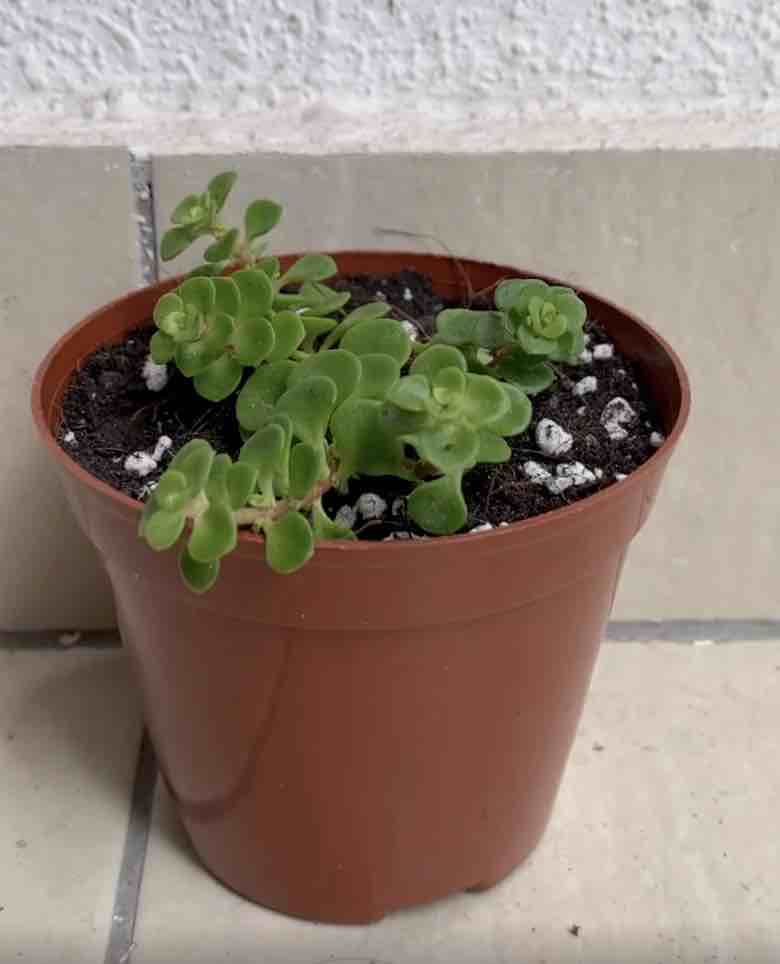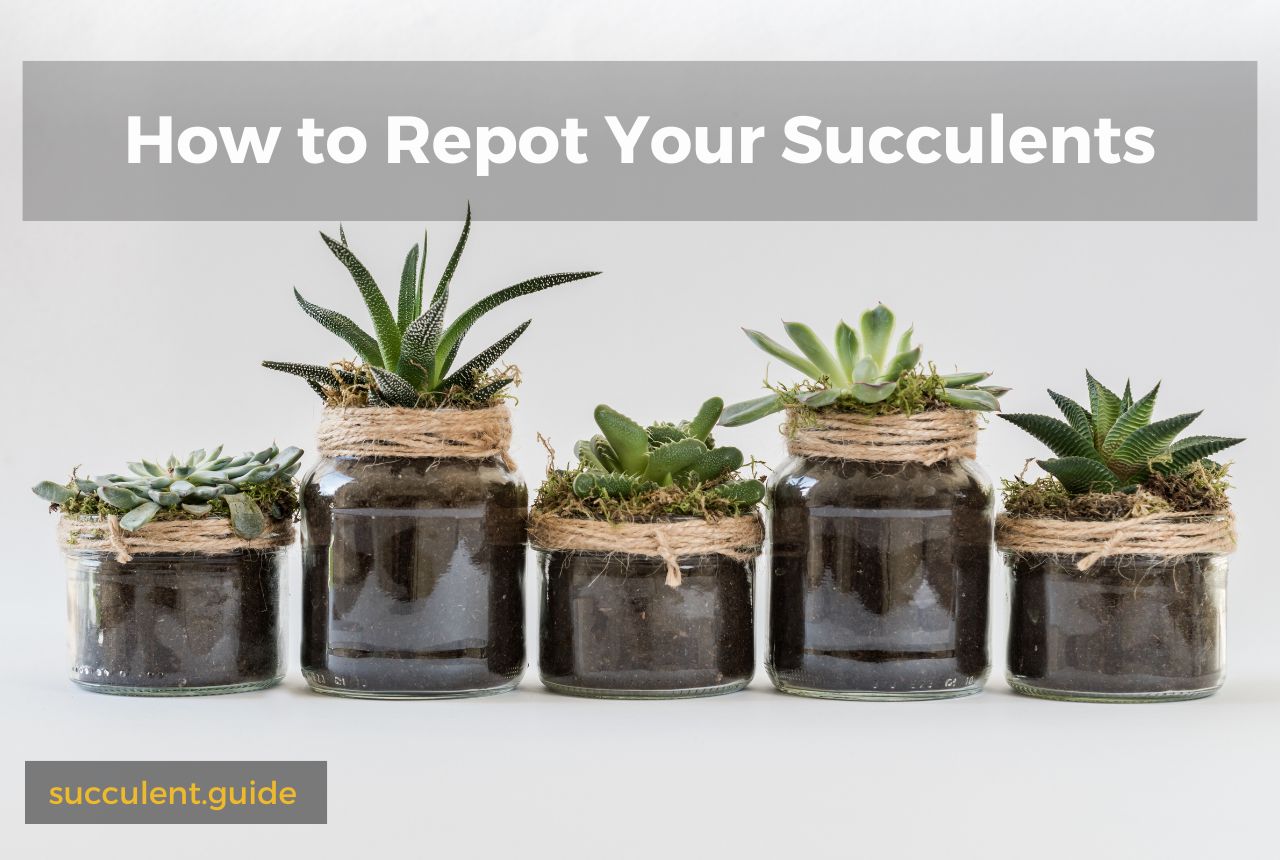Like I always mention, reporting is one of the major reasons that cause your succulent to die after a few weeks.
In order to make it easier for all of you. Below are some steps that I normally do when reporting my succulent plants.
7 Steps to Repot Your Succulents

- Choose a new pot that is slightly larger and has drainage holes. Terra-cotta pots are an excellent succulent option, allowing the soil to dry faster.
- Cover the drainage hole with a small stone or broken pottery. This will prevent the soil from falling out and improve the drainage.
- Fill the new pot with well-drained, sandy soil specially formulated for succulents or cacti. Or make your own by mixing one part perlite, one part coarse sand, and two parts potting soil.
- Remove the succulent from its old pot by gently grasping the base of the stem and shaking the container. You may need to turn the pot sideways and arrange the leaves or shoots in one direction. Use gloves or a cloth to protect your hands if the succulent is spiny.
- Trim any dead or rotten roots with a sharp knife or scissors. If the succulent has root rot, let it sit out for 1-3 days until the roots are dry before repotting.
- Place the succulent on top of the soil in the new pot and gently press it down. Make sure the stem is not buried too deep or too shallow. You can use some rocks or pebbles to support the plant if needed.
- Leave the pot in a warm, dry place away from direct sunlight for a few days to allow the roots to settle. Wait to water the succulent until you see new growth.
3 Main Reasons Cause Succulent Die After Repotting
There are three main reasons why succulents may die after repotting, such as:
- Transplant shock: This is when the succulent experiences stress from being moved to a different environment, such as a new pot, soil, or location. The succulent may droop, turn yellow, brown, or black, and die back. To prevent transplant shock, repot your succulent when it is not actively growing (usually in winter), use a similar soil type and moisture level as the old pot, and gradually acclimate the succulent to its new location.
- Root damage occurs when the succulent’s roots are injured or broken during repotting. The succulent may wilt, lose leaves, or rot. To avoid root damage, gently remove the succulent from its old pot, trim any dead or rotten roots, and avoid burying the stem too deep or too shallow in the new pot1.
- Root rot is when fungi or bacteria infect the succulent’s roots due to overwatering or poor drainage. The succulent may have soft, mushy, or blackened roots and leaves. To prevent root rot, use well-drained, sandy soil specially formulated for succulents or cacti, water your succulents only when the soil is dry, and ensure the new pot has drainage holes.
If you notice any signs of your succulent dying after repotting, you should try to identify the cause and take appropriate action to save it. Some possible solutions are:
- Cut off the healthy parts: If the succulent has root rot or severe damage, you may be able to salvage some healthy parts by cutting them off with a sharp knife or scissors. You can let them dry for a few days and replant them in fresh soil.
- Change the watering schedule: If the succulent is overwatered or underwatered, you should adjust your watering frequency and amount according to the succulent’s needs. Generally, succulents need less water in winter and more water in summer. You can check the soil moisture by inserting your finger an inch deep into the soil. If it feels dry, you can water your succulent until water drains out of the bottom of the pot. If it feels moist or wet, wait until it dries out before watering again.
- Move to a different location: If the succulent is getting too much or too little light, relocate it to a spot that receives bright but indirect sunlight for at least 6 hours daily. You can also use a grow light if natural light is not sufficient. Avoid placing your succulent in direct sunlight or a dark room.
I hope this helps you understand why your succulent may be dying after repotting and how to revive it. Good luck! 😊
Linh

